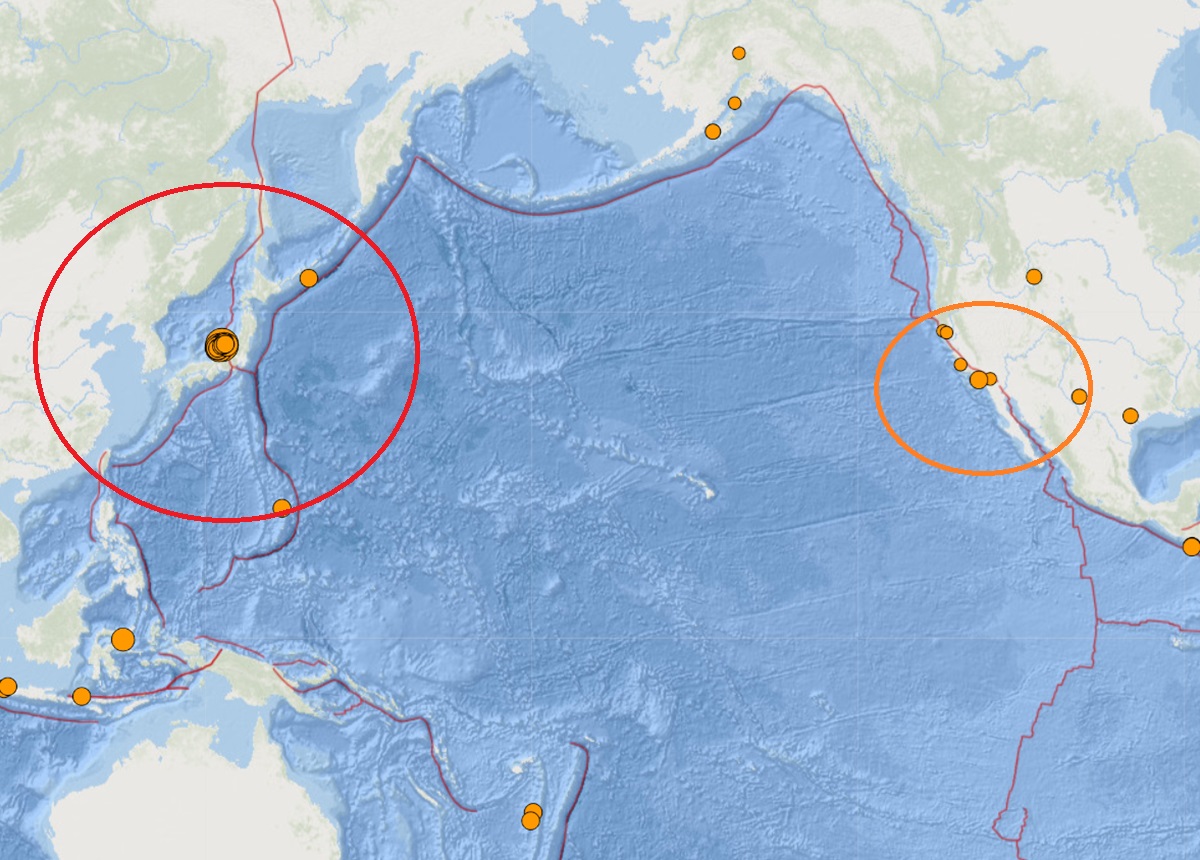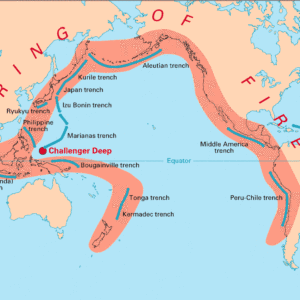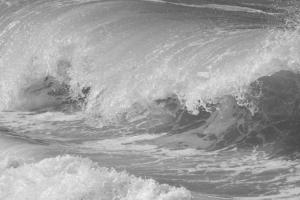
The new year kicked off on a seismically active note, with a catastrophically strong earthquake in Japan, a tsunami threat from that earthquake activity, and numerous earthquakes across the Ring of Fire around the Pacific, including a moderate earthquake which struck southern California this morning and others elsewhere in the U.S. and beyond. The Ring of Fire, also referred to as the Circum-Pacific Belt, is a path along the Pacific Ocean characterized by active volcanoes and frequent earthquakes.
Scientists do not know what if any link there is between the powerful X class flare that exploded from the sun yesterday and this uptick in seismic activity. Yesterday’s flare was the strongest in more than 6 years.

The first and strongest quake was a magnitude 7.5 event which struck western Japan on Monday. According to both USGS and the Japan Meteorological Agency (JMA), the catastrophic earthquake struck west of Anamizu, Japan from a depth of 10 km. Tsunami waves of up to 4 feet were generated by the earthquake around Japan, prompting authorities to issue tsunami warnings and evacuate coastal communities.
According to local media in Japan, numerous roads and buildings were damaged, transport and communication services have been disrupted, and officials warned of potential power outages for thousands of homes.
More than 30 aftershocks have been reported, many over magnitude 5.0, with Japan’s weather agency warning they could continue over the next three days to a week.
The National Weather Service National Tsunami Warning Center issued multiple bulletins about the earthquake describing the liklihood of regional tsunamis near the epicenter but discounting the possibility of a Pacific-wide tsunami event. Ultimately, they said, “Based on earthquake information and historic tsunami records, the earthquake is not expected to generate a tsunami.”
Tsunamis are giant waves caused by earthquakes or volcanic eruptions under the sea. Out in the depths of the ocean, tsunami waves do not dramatically increase in height. But as the waves travel inland, they build up to higher and higher heights as the depth of the ocean decreases. According to the National Ocean Service, the speed of tsunami waves depends on ocean depth rather than the distance from the source of the wave. Tsunami waves may travel as fast as jet planes over deep waters, only slowing down when reaching shallow waters. While tsunamis are often referred to as tidal waves, this name is discouraged by oceanographers because tides have little to do with these giant waves. The location, depth, movement, and intensity associated with today’s earthquake wasn’t enough to trigger a tsunami from today’s earthquake.

A moderate quake also struck southern California today, prompting the National Tsunami Warning Center to issue another bulletin dismissing the threat of a U.S. tsunami. At 8:28 am this morning local time, a magnitude 4.2 earthquake jolted southern California, with the earthquake’s epicenter located at a depth of 8 miles about 90 miles northwest of San Diego and about 35 miles southwest of Los Angeles. While considerable shaking was observed from Santa Monica to Newport Beach, there are no reports of significant damage or injuries.
In the past 10 days, there has been one earthquake of magnitude 3.0 or greater centered nearby. According to USGS, there are an average of five earthquakes with magnitudes between 4.0 and 5.0 occur per year in the greater Los Angeles area, according to a recent three-year data sample.
In the last 24 hours, there have been more than 200 earthquakes around the Ring of Fire, with the Japanese and California earthquakes being the strongest.